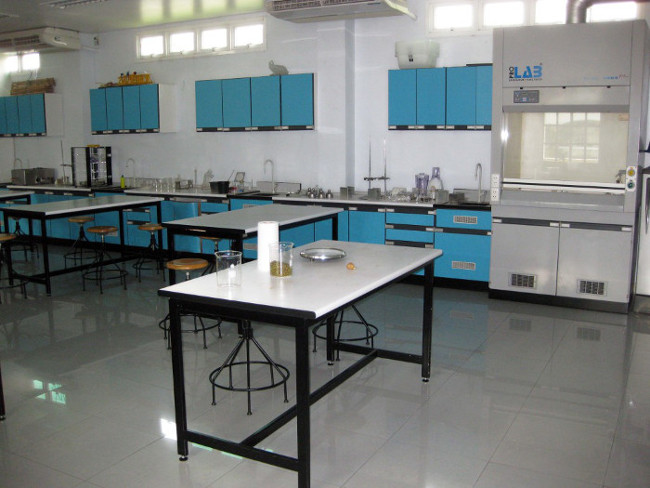Science is an important part of the school curriculum and one that most students enjoy with its many and varied experiments; however there are certain precautions that need to be taken to ensure the safety of everyone in the classroom.

We cover everything you need to know in our 3 part science lab safety guide. In part one we are starting with.
General safety tips for the lab
Fire regulations:
Make sure that you are up to date and familiar with your school’s evacuation plans and where the exits and assembly points are located. Also, check that all fire extinguishers are clearly labelled with signs
Safety:
Make sure that you know your safety procedures and are displaying safety posters, along with emergency numbers which may be useful. You can get a wide range of safety posters covering most circumstances.
Allergies:
It’s worth knowing if any of your students have allergies or any medical problems which could be triggered, or which pose any potential hazards.
Disabilities:
Assessing the classroom for any barriers or potential difficulties that could face a disabled student or school visitor. Ramps are a great addition to a classroom and some even fold away for compact storage.
Tidy:
It’s imperative that the classroom is kept tidy and uncluttered and any schoolbags are put away so they do not cause tripping hazards in the lab, which could lead to injuries.
Eating and drinking:
is a big no-no in the classroom and anywhere else that science investigations are to be carried out. Also, make sure that everyone has washed their hands once the lesson is over, displaying a wash your hands sign can be an effective way of reminding students to do this.
Storage:
Chemicals or biological specimens should NOT be stored in the same refrigerator or cupboard as food or drink under any circumstances.
Working space:
Having adequate working space for activities is important, around 11 cubic metres per person is the accepted norm. You will also need to provide low tables for wheelchair accessibility. You can get height adjustable tables for this.
Groups:
When performing experiments, it is advisable to break the class down into manageable groups, so that accidents and confusion are reduced.
Items:
Please make sure that the following items are easily available when needed:
- Non-allergenic gloves
- Non-absorbent, chemical resistant aprons
- Eyewash units
- Flame retardant treated fire blanket
Glass Safety
Disposal:
When you are disposing of any glassware or anything sharp, it is advisable to use a sharps bin specifically designed for such a task. You can get these bins in varying sizes depending on your need.
Be clear:
Inform students that drinking out of any glassware used for scientific investigation is forbidden and go over the consequences of what could happen.
Chemical Safety
Chemical storage:
Chemicals must be stored in a secured cabinet or cupboard. you can get hazardous materials/chemicals bins specifically designed for this. Storage space needs to be kept in a cool, dry place and locked when not in use.
Understanding:
It is imperative to make sure that your students understand that mixing chemicals to see what would happen or tasting chemicals is extremely dangerous and could be fatal in some cases.
Labels:
Make sure all equipment and chemicals are labelled, not only by name, but also with how hazardous they and any other relevant information.
Electrical Safety
Hand tools:
Make sure that the students are aware that non-electrical tools like hammers, screwdrivers, and hand drills can easily slip out of your hand and create projectile objects or cause very serious cuts. This is why appropriate safety gear should be worn.
Hot:
Tools that have just been used may still be hot, it is best to advise your students not to touch them immediately after turning them off, as they could cause burns and permanent scarring.
Surfaces:
It is important to make sure that all surfaces and students’ hands are dry before using, plugging in or switching on/off any electrical appliances or tools. Water is a great conductor of electricity, and this can cause serious injury and even has the potential to be fatal.
Cords:
Make sure that all electrical cords are short and are plugged into the nearest socket, this stops wires getting tangled and being a potential hazard. Also make sure that the cords are in a good state of repair.
Reiterate
That any experiments done in the safety of the classroom are not to be tried at home, or unsupervised at school. If it were to go wrong, it could cause serious injury.
That’s it for our first part of our Science Lab Safety Guide, in part 2 we will be looking at the physical specifications for classrooms, science labs and resource rooms.